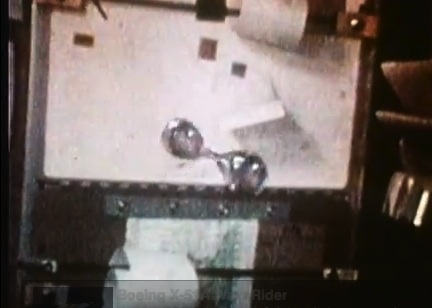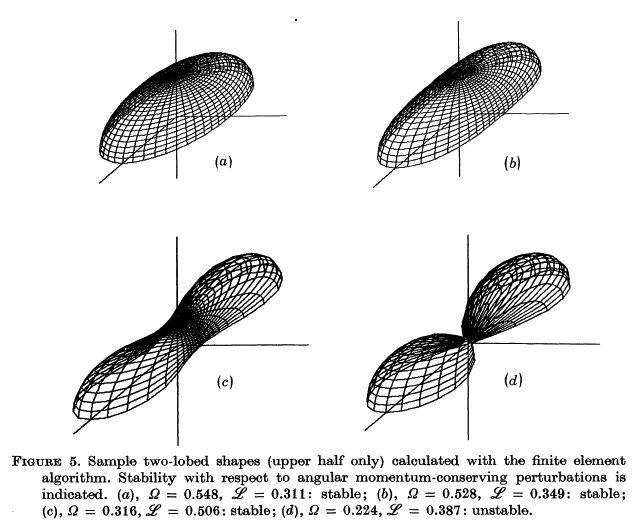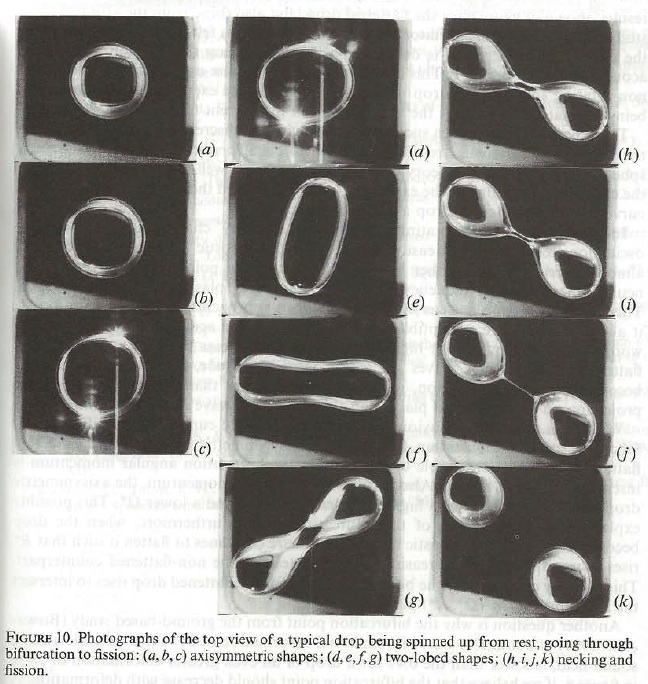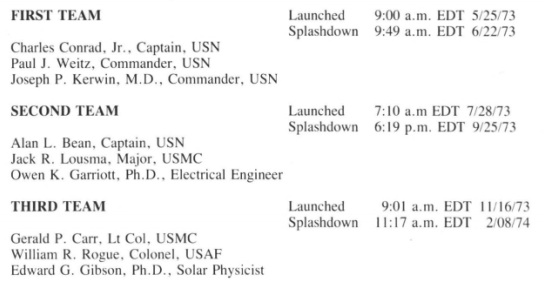Difference between revisions of "User:Tohline/ThreeDimensionalConfigurations/BinaryFission"
(→Qualitative Illustration: Adjust layout of four figures) |
(→Illustration: Just adjust size of displayed figures) |
||
| Line 12: | Line 12: | ||
'''Figure 1''' | '''Figure 1''' | ||
<br> | <br> | ||
[[File:SkylabFission.jpg| | [[File:SkylabFission.jpg|300px|Droplet Fission]] | ||
<br><br> | <br><br> | ||
YouTube video: | YouTube video: | ||
| Line 21: | Line 21: | ||
'''Figure 2''' | '''Figure 2''' | ||
<br> | <br> | ||
[[File:BrownScriven1980_Fig5.jpg| | [[File:BrownScriven1980_Fig5.jpg|300px|Theoretical Model]]<br> | ||
[http://adsabs.harvard.edu/abs/1980RSPSA.371..331B Brown & Scriven (1980)] | [http://adsabs.harvard.edu/abs/1980RSPSA.371..331B Brown & Scriven (1980)] | ||
<br> | <br> | ||
| Line 29: | Line 29: | ||
'''Figure 4''' | '''Figure 4''' | ||
<br> | <br> | ||
[[File:Wang1994_Fig10.jpg| | [[File:Wang1994_Fig10.jpg|350px|USML-1 Experiment]]<br> | ||
[http://dx.doi.org/10.1017/S0022112094002612 Wang, Anilkumar, Lee & Lin (1994)] | [http://dx.doi.org/10.1017/S0022112094002612 Wang, Anilkumar, Lee & Lin (1994)] | ||
<br> | <br> | ||
| Line 39: | Line 39: | ||
'''Figure 3''' | '''Figure 3''' | ||
<br> | <br> | ||
[[File:HachisuEriguchi1984.jpg| | [[File:HachisuEriguchi1984.jpg|350px|Hachisu & Eriguchi scenario]]<br> | ||
[http://adsabs.harvard.edu/abs/1984Ap%26SS..99...71H Hachisu & Eriguchi (1984)] | [http://adsabs.harvard.edu/abs/1984Ap%26SS..99...71H Hachisu & Eriguchi (1984)] | ||
<br> | <br> | ||
Revision as of 16:31, 3 January 2014
Fission Hypothesis of Binary Star Formation

|
|---|
| | Tiled Menu | Tables of Content | Banner Video | Tohline Home Page | |
Illustration
|
Figure 1
|
Figure 2
|
Figure 4
|
|
Figure 3
|
||
Related Discussions
Fission in Nuclear Physics
The nuclear physics community also draws an analogy between the fission of a rotating fluid drop and the spontaneous fission of atomic nuclei; see, for example, the figure associated with the Wikipedia discussion of the energetics of nuclear fission.
Drop Dynamics Experiments
[On 1 January 2014, J. E. Tohline wrote ...] As I was putting this chapter together, I had difficulty documenting the various drop dynamics experiments that have been conducted by astronauts in various Earth-orbiting (zero <math>g</math>) environments. Here is the relevant information that I have found, to date:
- Skylab (circa 1973-1974): Experiments showing the fission of liquid drops were evidently conducted during the Skylab 2, Skylab 3, and Skylab 4 missions.
- As has been documented in a short film review written by Howard Voss and published in the American Journal of Physics (44/10, 1021, Oct 1976), film footage from a variety of Skylab experiments was produced by NASA, edited by Thomas Campbell & Robert Fuller, and, beginning in 1976, distributed as 12 Super 8 film loops by the American Association of Physics Teachers (AAPT).
- As is documented in A Teacher's Guide for the Skylab Physics Videodisc the content of all 12 Super 8 film loops was made available for distribution in Videodisc format in 1987 through the AAPT.
- The YouTube video referenced in and linked to the caption of Figure 1, above, is the digitized version of the Skylab film loop that illustrates fission of a water droplet.
|
According to the Teacher's Guide mentioned above, the activities shown in the above-referenced films were carried out by three teams of Skylab Astronauts: |
|
|
|
|
- Space Shuttle Flights (circa 1992): Experiments illustrating the dynamical behavior of liquid drops were evidently also conducted during a couple of space shuttle missions. The experiments were performed with the aid of a "Drop Physics Module (DPM)" inside the "portable" United States Microgravity Laboratory (USML) that was housed in the shuttle's payload bay.
- The first mission — USML-1 during shuttle flight STS-50 — took place in early 1992. According to information provided by NASA/JPL's public information office, "… the transition of rotating liquid drops into a 'dog-bone,' or two-lobed shape, was studied in detail …" Detailed results from DPM experiments during the USML-1 mission have been published in the Journal of Fluid Mechanics: T. G. Wang, A. V. Anilkumar, C. P. Lee and K. C. Lin (1994). Bifurcation of rotating liquid drops: results from USML-1 experiments in Space. Journal of Fluid Mechanics, 276, pp 389-403
- I think that the three-frame black & white image shown here on the right presents a result from mission USML-1. That is how this image is referenced in an online discussion of fission that I put together about a decade ago.
- The second mission — USML-2 during shuttle flight STS-73 — took place in the fall of 1995. It does not appear as though the fission of liquid drops was an element of these USML-2 DPM experiments.
- International Space Station (circa 2000):
- See the two "Gallery of Fluid Motions" mpg movies that accompany the preprint by Ueno et al. (2012).
Online References
- The Fission Mechanism for Binary Star Formation
- Fission Simulations at LSU
- T. G. Wang, A. V. Anilkumar, C. P. Lee and K. C. Lin (1994). Bifurcation of rotating liquid drops: results from USML-1 experiments in Space. Journal of Fluid Mechanics, 276, pp 389-403
- Ohsaka & Trinh (19xx)

|
|---|
|
© 2014 - 2021 by Joel E. Tohline |






